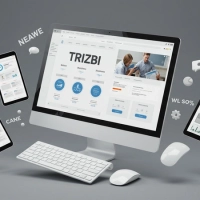
Storytelling in the B2B sector is a new method that has recently entered our lives in the field of marketing. In this method, the subject addressed is not the product but a subject that will evoke product-related associations, told on screen by an expert on the subject. In the e-commerce sector, where competition is increasing day by day, completely product-focused approaches are no longer functional. For this reason, a new approach has been adopted by using both content producers and celebrities. This method is a method that supports the demand for the product but whose main goal is to increase brand awareness. So, what are the advantages of the storytelling method in the B2B sector and what kind of contributions does it make to brand awareness? Let's find the answer to this question together.
What is Storytelling? In Which Sectors is it Used?

Storytelling is known as storytelling in our language. It is an art where the speaker's tone of voice, facial expressions and gestures, and the topics and sentences he chooses are designed to give a message to the listener. Today, we often see this art in commercial areas. When viewed from a commercial perspective, storytelling aims to establish an emotional bond between the brand and the listener while explaining why the company's products and services should be preferred, the brand's history and goals. In the B2B sector, storytelling increases brand recognition and also makes significant contributions to product and service sales.
What to Consider When Writing Storytelling Texts in the B2B Sector?
Writing meaningful texts in general is a challenging process because it is about activating different audiences. Writing storytelling texts in the B2B sector requires a separate mastery. Ultimately, the speaker should not only tell a story, but also work to activating the audience. The points to consider when writing storytelling texts are as follows:
-
The target audience should be analyzed well and a narrative should be made that appeals to the emotions of the audience.
-
Care should be taken to ensure that the message conveyed contains the right emotional triggers,
-
After watching the content, memorable, realistic messages should be able to stay in the mind of the viewer,
-
No matter how difficult the topic is, the aim should be to make the narration simple and understandable.
-
Care must be taken to ensure that the text presented is original,
-
As we said at the beginning, a product-focused narrative should not be made.
-
It should inspire,
-
Instead of the first person singular, broad plural expressions should be used in the narrative.
-
There should be narrative expressions that will trigger emotions and bring the brand and the audience together on common ground.
-
While explaining, various visual tools should be used to trigger visual memory.
What is the Importance of Using Storytelling in the B2B Industry?
In fact, many direct and indirect reasons can be mentioned under this heading. However, we tried to collect the subject under three main headings to prevent you from getting lost in the details:
Persistence in the competitive environment: Our country is rapidly becoming digital in every field. The biggest change caused by digitalization is undoubtedly the increasing competition between digitalized companies. The use of storytelling in the B2B sector allows the brand to establish an emotional bond with the target audience and therefore to guarantee its permanence in the competitive environment.
Increased recognition: Every individual wants to work with brands that have analyzed their feelings well and feel close to them, and informs their surroundings about that brand. As in other sectors, storytelling in the B2B sector also supports WOM (Word of mouth) marketing management.
Establishing connections: Establishing connections between companies is as important as establishing connections between individuals. Just as we want to meet more with people we have established connections with, in the B2B sector, companies prefer to do business with companies they have established connections with.
B2B platforms that bring companies together and enable them to trade should also include elements that support marketing methods. Trizbi also offers its users many modules and services that support the marketing activities of companies.























